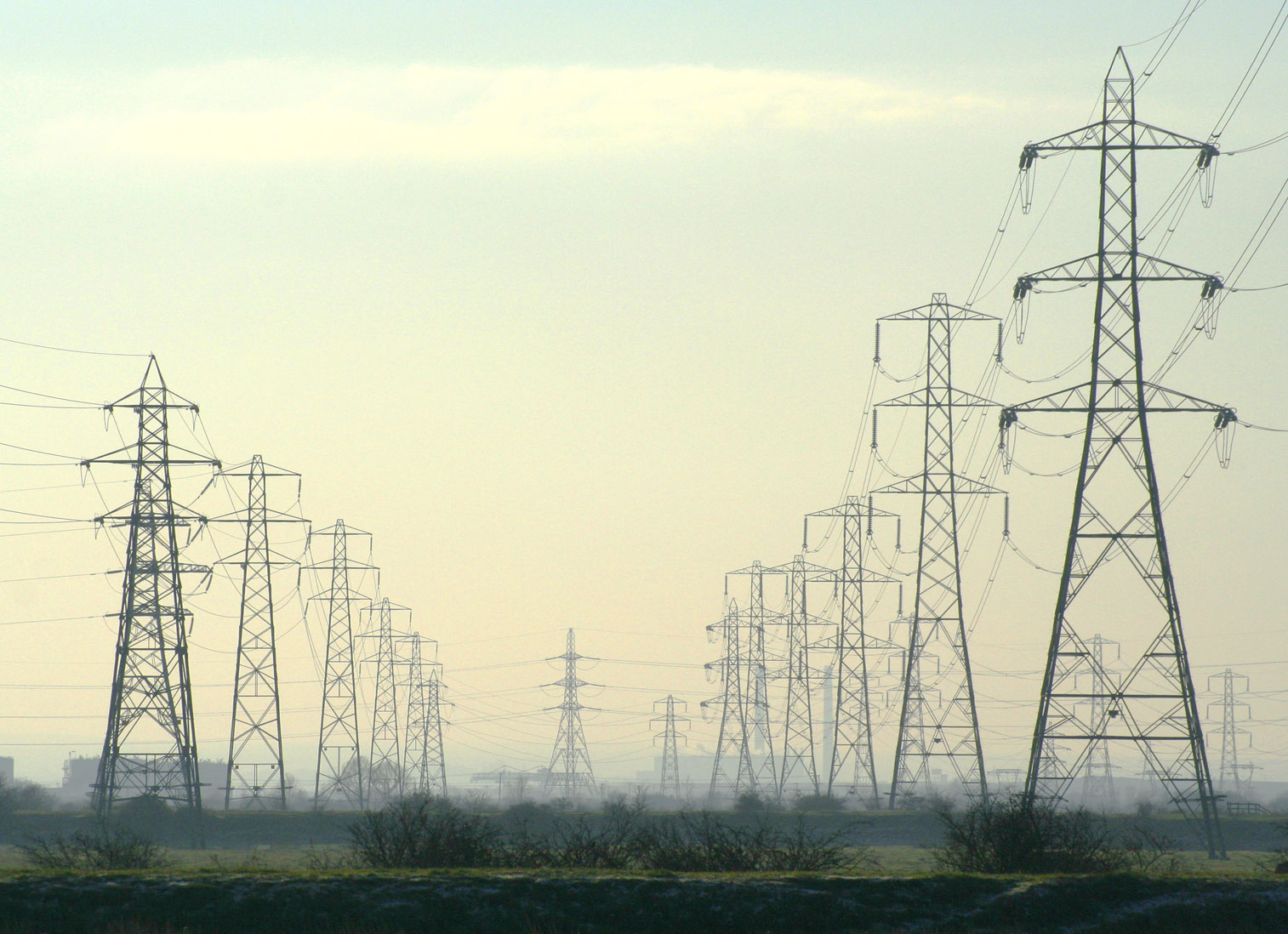Kyle Burns*
This post is part of the Environmental Law Review Syndicate. Read the original here and leave a comment.
Introduction
Every nation around the world faces ecological hardships. Almost every nation has responded with a legal regime that attempts to ensure environmental protection. These environmental law schemes come in various forms. Some nations place environmental protection at the highest level, securing it within a national constitution, while others relegate it to the statutory level. Some nations have positive rights, placing a duty on the government to protect the environment, while others create negative rights, preventing discharges of pollution into the air and water. What becomes clear upon analyzing different regimes is that neither the source of the right (i.e. constitutional or statutory) nor the form of the right (i.e. positive or negative) is the dispositive factor determining how protective a nation’s environmental law regime is. I submit that it is the manner in which those rights are enforced that controls the end result. Thus, even the loftiest promise of environmental quality can go unrealized in the face of substandard enforcement or outright non-justiciability, while seemingly less important statutory restrictions on pollution may achieve greater benefits.
My conclusion is supported in three parts. Part I briefly describes environmental law in the United States, providing a backdrop for the remainder of the analysis. Part II describes major features of environmental law in six nations around the world, chosen as illustrative case studies of nations with environmental provisions in their constitutions. Part II makes a point to touch upon judicial interpretation and enforcement in those nations. Finally, Part III further discusses enforcement (or lack thereof) in environmental law, returning to the United States and directly comparing the American experience to those of other nations.
I. Environmental Law in the United States
The United States Constitution is “pre-ecological.”[1] That is, it contains no reference, either explicit or implicit, to environmental concerns.[2] As a result, federal environmental law in the United States is entirely statutory. “[I]n response to rising public consciousness during the 1950s and 1960s of the perils of pollution and of the waste of natural resources,” a multitude of environmental laws arose during the 1970s that transformed the landscape for environmental law.[3] These statutes constituted a “quasi-constitutional reordering” of federal law.[4]
Four U.S. laws stand out as most prominent: the National Environmental Policy Act, Endangered Species Act, Clean Water Act, and Clean Air Act. The National Environmental Policy Act[5] (“NEPA”) has been referred to as “the Magna Carta of environmental protection.”[6] NEPA set the environmental policy of the federal government, regulating federal agencies.[7] Its requirements include an Environmental Impact Statement “for all proposals for legislation and other major federal actions which may significantly affect the quality of the human environment.”[8] The Endangered Species Act[9] (“ESA”) was heralded as “a rudimentary bill of rights for biodiversity.”[10] It “unsettled existing standards of conduct,” creating an absolute mandate that federal agencies not jeopardize the continued existence of endangered or threatened species or adversely modify their habitat.[11] The central purpose of the Act was to “provide a means whereby the ecosystems upon which endangered species and threatened species depend may be conserved.”[12] As a result of its strong protections, the ESA “remains a strong tool for species preservation, and it has earned its eco-centric stripes.”[13] The Clean Water Act[14] (“CWA”) “succeeded a failed 1965 federal law and a common law regime that applied often vague and indeterminate nuisance concepts and maxims of equity jurisdiction.”[15] Congress passed the CWA with the purpose of “[protecting] and [restoring] the chemical, physical, and biological integrity of the Nation’s waters.”[16] Its main policy, to eliminate all discharges of pollution into the nation’s waters by 1985, was “perhaps the boldest undertaking … of any environmental law.”[17] It aspired to achieve fishable and swimmable waters everywhere by 1983.[18] The Clean Air Act[19] (“CAA”) differs slightly from the other statutes, focusing more on human health than on purely ecological interests.[20] The CAA is meant “to protect the nation’s air quality so as to promote the public health and welfare and the productive capacity of its population.”[21] The main feature of the statute, the National Ambient Air Quality Standards, is cost-blind, protecting air quality even in the face of great economic cost.[22] These four statutes form the bedrock of American environmental law, creating the foundation upon which the last four decades of environmental protection efforts in the United States have been built.
II. Environmental Rights Abroad
Looking outside the United States, one finds a diverse array of environmental law regimes around the world. Three nations in particular––South Africa, India, and Nigeria––stand out as worthwhile case studies. Each nation provides a different perspective on how environmental rights can be enshrined in different ways in constitutions, and the manners in which those guarantees are translated into rights––or, how the promise of environmental protection sometimes fails to translate into enforceable rights.
A. South Africa
The Constitution of the Republic of South Africa contains an explicit environmental right in Section 24. Section 24 is in Chapter 2 of the Constitution, which contains its Bill of Rights. It reads:
Everyone has the right––
(a) To an environment that is not harmful to their health or well-being; and
(b) To have the environment protected, for the benefit of present and future generations, through reasonable legislative and other measures that––
(i) Prevent pollution and ecological degradation;
(ii) Promote conservation; and
(iii) Secure ecologically sustainable development and use of natural resources while promoting justifiable economic and social development.[23]
In concert with Section 7(2),[24] this provision creates an affirmative duty for the South African government to take action towards its fulfillment.[25] The exact content of that duty, though, is imprecise and requires a fair amount of judicial interpretation: “The evolution of constitutional environmental law heavily relies on the ability of, and opportunity for the courts to concretize the (often elusive) meaning of all rights that may have a bearing on the environment.”[26] Most often, the Constitutional Court––the highest court in South Africa––decides these questions.[27]
Stemming from Section 24 is the National Environmental Management Act (“NEMA”), South Africa’s primary environmental framework law.[28] The statute “provides generic provisions (including environmental management principles) regulating all environmental media and sectors and all public and private actions which may affect the environment.”[29] The definition of “environment” for the purposes of Section 24 is included in NEMA.[30] That definition “transcends mere ecological interests,” extending to “the socioeconomic and cultural dimensions of the inter-relationship between people and the natural environment.”[31] Despite the inclusion of statutes such as NEMA in the environmental law regime in South Africa, “[t]he entire South African environmental law and governance framework is premised on the [constitutional] environmental right.”[32] It is “the rationale behind, justification for, and foundation and impetus of environmental governance in South Africa.”[33]
A noteworthy feature of South African law is the standing requirement. The Constitution confers standing upon the following people:
(a) Anyone acting in their own interest;
(b) Anyone acting on behalf of another person who cannot act in their own name;
(c) Anyone acting as a member of, or in the interest of, a group or class of persons;
(d) Anyone acting in the public interest;
(e) And an association acting in the interest of its members.[34]
The most prominent aspect of this broad standing doctrine is the ability of any person to bring an action in the name of the public interest. The “almost non-exhaustive” provisions allows for class actions suits, actions on behalf of unidentifiable classes, and suits on behalf of groups of people, protecting and enforcing their environmental rights.[35] This means that “the environmental right is sufficiently comprehensive and all-encompassing to provide ‘everyone’ in South Africa with the possibility of seeking judicial recourse in the event that any of several potential aspects related to the right or guarantee derived therefrom is infringed.”[36] This remarkably broad standing requirement is perhaps even more important than the constitutional guarantee itself, giving essentially any person in the nation the ability to bring a suit in order to secure environmental protection pursuant to Section 24. It contrasts sharply with the restrictive standing requirements in the United States, discussed infra, in Part III.
B. India
India’s constitution and environmental rights jurisprudence presents a particularly interesting case. While the Constitution of India does explicitly reference the environment and environmental rights, it does so in a section of the constitution that is unenforceable. Article 48A, titled “Protection and improvement of environment and safeguarding of forests and wild life,” reads, “The State shall endeavour to protect and improve the environment and to safeguard the forests and wild life of the country.”[37] Article 51A instructs, “It shall be the duty of every citizen of India … to protect and improve the natural environment including forests, lakes, rivers and wild life, and to have compassion for living creatures.”[38] While these seem like powerful and instructive provisions upon first reading them, the source of these rights constrains their application. Article 37 unambiguously makes these provisions unenforceable: “The provisions contained in [Part IV] shall not be enforceable by any court, but the principles therein laid down are nevertheless fundamental in the governance of the country and it shall be the duty of the State to apply these principles in making laws.”[39] Thus, the Indian Constitution’s explicit reference to the environment is rendered ineffective due to its non-justiciability.
This did not stop Indian courts from finding an enforceable right to a clean environment for Indian citizens. The Supreme Court of India, as well as some lower courts, has interpreted a constitutional right to a healthy environment from the constitutional right to life.[40] Article 21 of the Indian Constitution protects the right to life: “No person shall be deprived of his life or personal liberty except according to procedure established by law.”[41] The Court first implied that the right to a healthy environment was fundamental and cognizable under Article 21 in the Dehradun Quarrying Case of 1983,[42] when, in response to a claim that illegal limestone mining was damaging the ecosystems in the Dehradun region, the Court directed its clerk to treat the letter as a writ petition under Article 32––the provision that lays out remedies for violations of fundamental rights.[43] While the Court did not explicitly find that environmental protection is a fundamental right, “exercise of Article 32 jurisdiction presupposed the infringement of a fundamental right.”[44]
Following the Dehradun Quarrying Case, lower courts (specifically, the High Courts) reiterated this interpretation of Article 21. In T. Damodar Rao v. The Special Officer, Municipal Corporation of Hyderabad, one High Court held,
[I]t would be reasonable to hold that the enjoyment of life and its attainment and fulfilment [sic] guaranteed by Art. 21 of the Constitution embraces the protection and preservation of nature’s gifts without [which] life cannot be enjoyed. There can be no reason why practice of violent extinguishment of life alone should be regarded as violative of Art. 21 of the Constitution. The slow poisoning [of] the polluted atmosphere caused by environmental pollution and spoilation [sic] should also be regarded as amounting to [a] violation of Art. 21 of the Constitution.[45]
The court also determined that the Supreme Court’s decision in the Dehradun Quarrying Case “can only be understood on the basis that the Supreme Court entertained those environmental complaints under Art. 32 of the Constitution as involving violation of Art. 21’s right to life.”[46] Several other High Courts came to the same conclusions about the meaning of the Supreme Court’s decision and the proper interpretation of Article 21.[47]
Finally, in Subhash Kuimar v. State of Uttar Pradesh, the Indian Supreme Court expressly determined that Article 21 includes a right to a clean environment: “any action that would cause environmental, ecological, air, water pollution, etc., should be regarded as amounting to a violation of Article 21.”[48] In so deciding, the Court reasoned that, “life in its proper dimension could not be enjoyed unless the ecological balance and the purity of air and water were preserved.”[49]
This extension of the fundamental rights doctrine makes sense in the context of the Indian Supreme Court’s jurisprudence. The Court had previously declared that the right to life “includes the right to live with human dignity and all that goes along with it.”[50] It also declared that fundamental rights “‘weave together a pattern of human rights guarantees’ that are not mutually exclusive and distinct.”[51] Despite the lack of an express, justiciable constitutional right to a clean environment, Indian citizens secured a powerful right to the environment through their Supreme Court and its decision to enforce the right to life and personal liberty in the context of environmental harms.
C. Nigeria
Nigeria presents still a different case. The Nigerian Constitution, like the Indian Constitution, contains an explicit environmental reference in the section that lays out policy directives, rather than fundamental rights (or otherwise justiciable rights). Its Section 20 states, “The State shall protect and improve the environment and safeguard the water, air and land, forest and wild life of Nigeria.”[52] This section is contained in the chapter entitled “Fundamental Objectives and Directive Principles of State Policy,” indicating its status as a policy position rather than a guarantee of environmental protection.[53] However, the inclusion of this policy directive carries an implication that “the State recognises the intimate linkages between the environment and human rights and that the failure of the State to protect the environment may interfere with individual human rights.”[54] In addition, the Supreme Court of Nigeria has declared that constitutional policy directives may be made justiciable through an act of the legislature.[55]
There have been efforts in Nigeria to find a right to a clean environment through the constitutional right to life and dignity and through international law, specifically the African Charter on Human and Peoples Rights.[56] A Federal High Court refused to find such a right in Okpala v. Shell Petroleum Development Company (SPDC).[57] The Court did not decide on the question of whether there is a right to a clean environment through the constitutional right to life and dignity, instead deciding that the Applicants could not sue on behalf of the community or in a representative capacity, restricting standing in fundamental rights cases to individuals bringing suits on their own behalf.[58] In addition, the Court also refused to find an enforceable right to a clean and healthy environment through the African Charter, holding that the rights guaranteed under the African Charter were not covered within the definition of fundamental rights under the scope of Section 46(1) of the 1999 Constitution, which gives citizens a right to sue for redress of a violation of fundamental rights.[59]
Nigeria is a case study in unrealized potential. Its Supreme Court has the opportunity to find an enforceable right to the environment for its people, either through its own constitution or through the African Charter. But, the Court has refused. Between an unwilling judiciary and a corrupt government that has paid little attention to the environmental catastrophes in the Niger Delta,[60] the Nigerian Constitution’s promise of environmental protection will go unfulfilled.
III. Translating Rights into Enforcement
The experiences of South Africa, India, and Nigeria demonstrate that the promise of environmental protection or environmental rights does not always translate into rights on the ground. What one finds instead is that the way in which environmental protection is secured in national laws (i.e. in a constitution or in statutes) is not the dispositive factor; both can provide effective and powerful means of securing environmental benefits. Instead, it is the availability and potency of enforcement that determines how effective an environmental protection regime will be. In the end, as often occurs, the power lies with the judiciary.
Sometimes, the enforcement problem is inherent in constitutional provision itself. Rather than creating a justiciable right, the constitution instructs the legislature to take action, without prescribing a remedy in the event the legislature is inactive. The environmental provision in India’s constitution was of this type, serving as an explicitly unenforceable policy directive, leaving Indian citizens without a constitutional environmental right until the Indian judiciary found it elsewhere in the constitution. This is also the case in Nigeria, which remains without an enforceable environmental right. Even when a constitution instructs that a legislature “shall” take action––rather than using the more permissive “may”––in an attempt to impose a duty on the legislature to act, courts may still be unwilling or unable to force action upon the legislature.[61] In this way, statutes seem preferable to constitutions, as they do not suffer from the fault of unenforceability or non-justiciability.
This discussion brings the analysis back to environmental law in the United States, where enforcement is crucial and contested.[62] While environmental protection has never reached constitutional status, its presence at the statutory level is not inherently constraining on the force of the prospective right. For instance, NEPA’s language was powerful, broad, and sweeping. The Act’s first section recognized “the profound impact of man’s activity on the interrelations of all components of the natural environment,” declaring it the federal government’s policy “to use all practicable means and measures … in a manner calculated to foster and promote the general welfare, to create and maintain conditions under which man and nature can exist in productive harmony, and fulfill the social, economic, and other requirements of present and future generations of Americans.”[63] NEPA made it the “continuing responsibility” of the federal government to direct its national policy in a way that made it possible for the nation to “fulfill the responsibilities of each generation as trustee of the environment for succeeding generations,” “attain the widest range of beneficial uses of the environment without degradation, risk to health or safety, or other undesirable and unintended consequences,” and “enhance the quality of renewable resources and approach the maximum attainable recycling of depletable resources,” among other objectives.[64] It reads like a constitutional promise of environmental rights (perhaps the source of its “Magna Carta of environmental protection” nickname).
However, the promise of NEPA still fell short, and it failed because the Supreme Court gutted the significance of this language. When NEPA came before the Court, it put an end to the prospect for substantive interpretation of NEPA’s requirements, characterizing NEPA as “essentially procedural.”[65] In addition, the Court stated that NEPA did not allow courts to substitute their judgment for an agency’s or to elevate environmental factors over any other appropriate factors, despite the strong and unambiguous language in the Act’s first section.[66] In Strycker’s Bay Neighborhood Council v. Karlen, for instance, the Court struck down the Second Circuit’s use of NEPA for “the substantive standards necessary to review the merits of agency decisions,” instead holding that NEPA was merely procedural, meant to “insure a fully informed and well-considered decision.”[67] As of 2015, in the seventeen cases that the Court has decided on the merits regarding NEPA, those bringing actions on behalf of environmental interests have never succeeded.[68] NEPA could have been read to guarantee positive rights, even a “proto-constitutional” right to environmental protection.[69] It did not matter that NEPA was a statute. What mattered was the Court’s treatment of its language and refusal to take the promises of its first section seriously.[70]
The citizen suit is an innovation of U.S. environmental law. Citizen suits allow ordinary citizens to sue either the government or private actors for violations of federal environmental laws, including ESA, CWA, and CAA.[71] It provided a mechanism for enforcement, even when the government failed to act.[72] Judges could grant plaintiffs in citizen suit actions injunctive relief and civil remedies against violators of environmental laws, providing not just a justiciable claim but a remedy for those claims as well.[73] Citizen plaintiffs may also recover attorney’s fees and litigation costs, removing common disincentives for would-be plaintiffs to take action.[74]
But, the Supreme Court restricted the availability of citizen suits by tightening the standing requirement. In Lujan v. Defenders of Wildlife, the court denied standing to a citizen suit plaintiff in an Endangered Species Act case.[75] The Court specified that a plaintiff must have an injury in fact (which is “actual or imminent, not conjectural or hypothetical”); there must be a causal connection between the alleged injury and the action complained of; and it must be likely (not merely speculative) that the injury is redressed by a favorable decision.[76] The plaintiff bears the burden of proving all three of these elements.[77] The Court rejected the plaintiffs’ claim for standing on the basis that it did not adequately allege an injury in fact.[78] The plaintiffs’ alleged injury was that the action in question would increase the rate of extinction of endangered and threatened species.[79] The Court held that this was not sufficient.[80] The plaintiffs were instead required to “submit affidavits or other evidence showing, through specific facts, not only that listed species were in fact being threatened by funded activities abroad, but also that one or more of respondents’ members would thereby be directly affected apart from their special interest in the subject.”[81] The plaintiffs also failed to demonstrate redressability, as they attacked the Government’s action broadly and generally, rather than challenging specific projects that would bring them harm.[82] In denying the Lujan plaintiffs standing, the Court “sent a message to environmentalists and other public interest advocates that it would be tougher in policing limits on judicial access than in the past.”[83] It restricted the availability of citizen suit enforcement, which was intended to give the public the power to enforce environmental statutes. This stands in stark contrast to South Africa, where standing is virtually limitless.[84]
While some advocate for an environmental amendment to the United States Constitution, arguing that “[p]rotection of the environment has now become an urgent responsibility to which our traditional legal system responds inadequately,”[85] it is unclear whether such an amendment would have a profound impact. The experiences both at home and abroad demonstrate that the power to determine the strength of environmental rights lies with the judiciary. If the U.S. experience to date is any indication, between gutting the substance of NEPA and restricting the availability of standing for citizen suit plaintiffs, even a strong environmental amendment would likely face intense scrutiny from courts, especially the Supreme Court, who may still find a way to truncate the guarantees of the amendment and the availability of enforcement for the rights therein.
Conclusion
When breaking down the environmental law regimes of nations from around the world, two things become undeniably clear: enforcement matters, and the power ultimately rests with the judiciary. Even though the U.S. Constitution lacks any environmental provision, the environmental protections guaranteed by four major federal environmental statutes (alongside the many others) reach constitutional levels. Those laws, as written and intended, provide broad, sweeping guarantees, establishing the new environmental policy of the nation and securing environmental quality for its people. It was not until the courts defanged those laws via standing requirements that they lost their original luster and possibility. Though it may seem that environmental rights are better protected when located in the nation’s constitution, the experiences of the United States, South Africa, India, and Nigeria readily demonstrate that this is not the case. Both constitutional and statutory rights can succeed and both can fail. Instead, the judiciary––often, the nation’s highest court––ultimately determines whether the guarantees of those laws and their impressive language translate into actionable rights. Often, the promise is left unfulfilled.
* J.D. Candidate, 2017, University of Virginia School of Law. The author would like to thank Professor A.E. Dick Howard, whose seminar in comparative constitutional law inspired this piece.
[1] Jonathan Z. Cannon, Environment in the Balance 29 (2015).
[2] Id.
[3] Richard J. Lazarus, The Greening of America and the Graying of United States Environmental Law: Reflections on Environmental Law’s First Three Decades in the United States, 20 Va. Envtl. L.J. 75, 76–77 (2001).
[4] Cannon, supra note 1, at 33.
[5] 42 U.S.C. § (2012).
[6] Cannon, supra note 1, at 34.
[7] Id.
[8] Joseph C. Sweeney, Protection of the Environment in the United States, 1 Fordham Envtl. L. Rep. 1, 15 (1989) (internal quotation marks omitted).
[9] 16 U.S.C. § 1531–44 (2012 & Supp. 2014).
[10] Cannon, supra note 1, at 35.
[11] Lazarus, supra note 3, at 79.
[12] J.B. Ruhl, Keeping the Endangered Species Act Relevant, 19 Duke Envtl. L. & Pol’y F. 275, 280 (2009).
[13] Cannon, supra note 1, at 35.
[14] 33 U.S.C. §§ 1251–388 (2012 & Supp. 2014).
[15] David Drelich, Restoring the Cornerstone of the Clean Water Act, 34 Colum. J. Envtl. L. 267, 269 (2009).
[16] Cannon, supra note 1, at 35 (internal quotation marks omitted).
[17] Id.
[18] Lazarus, supra note 3, at 78.
[19] 42 U.S.C. §§ 7401–7671q (2012 & Supp. 2014).
[20] Cannon, supra note 1, at 36.
[21] Id. (internal quotation marks omitted).
[22] Id.
[23] S. Afr. Const. ch. 2, § 24 (1996).
[24] Id. § 7(2) (“The state must respect, protect, promote and fulfill the rights in the Bill of Rights.”).
[25] Louis J. Kotzé & Anél du Plessis, Some Brief Observations on Fifteen Years of Environmental Rights Jurisprudence in South Africa, 3 J. Ct. Innovation 157, 158 (2010).
[26] Id.
[27] Id. at 161.
[28] Id. at 164, n.24.
[29] Id.
[30] See id. at 166.
[31] Id.
[32] Id.
[33] Id.
[34] S. Afr. Const., ch. 2, § 28 (1996).
[35] Kotzé & Plessis, supra note 25, at 163–64.
[36] Id. at 168.
[37] India Const. pt. IV, art. 48A (1949).
[38] Id. pt. IVA, art. 51A(g).
[39] Id. pt. IV, art. 37.
[40] See Peggy Rodgers Kalas, Environmental Justice in India, 1 Asia-Pac. J. on Hum. Rts. & L. 97, 108 n.51 (2000).
[41] India Const, pt. III, art. 21.
[42] Rural Litigation and Entitlement, Dehradun v. State of Uttar Pradesh, AIR 1985 SC 652.
[43] See Kalas, supra note 40, at 109.
[44] Id.
[45] T. Damodhar Rao v. The Special Officer, Municipal Corporation of Hyderabad, AIR 1987 AP 171, 181.
[46] Id.
[47] See, e.g., L.K. Koolwal v. State of Rajasthan, AIR 1988 Raj. 2; Madhavi v. Thilakan, 1988(2) Ker. L.T. 730; Kinkri Devi and Anr. v. State of Himachal Pradesh, AIR 1988 HP 4.
[48] Kalas, supra note 40, at 111 (citing Subhash Kuimar v. State of Uttar Pradesh, JT 1991 (1) SC 538).
[49] Id.
[50] Francis Coralie Mullin v. Union Territory of Delhi, AIR 1981 SC 746, 753.
[51] Kalas, supra note 40, at 109 n.54 (citing Maneka Gandhi v. Union of India, (1978) 2 SCR 621, 620–21).
[52] Constitution of Nigeria (1999), § 20.
[53] See id.
[54] Uchenna Jerome Orji, Right to a Clean Environment: Some Reflections, 42 Envtl. Pol’y & L. 285, 286 (2012).
[55] Id.
[56] Id. at 289.
[57] Id. at 288–89 (citing Okpala v. Shell Petroleum Development Company (SPDC), No. FHC/PHC/C5/518/2006 of 29 September, 2006).
[58] Id. at 289.
[59] Id. at 290.
[60] See generally Ibibia Lucky Worika, Deprivation, Despoilation and Destitution: Whither Environment and Human Rights in Nigeria’s Niger Delta?, 8 ILSA J. Int’l & Comp. L. 1 (2001).
[61] See A.E. Dick Howard, State Constitutions and the Environment, 58 Va. L. Rev. 193, 199 (1972).
[62] See, e.g., Drelich, supra note 15, at 268 (“Enforcement serves as the cornerstone of the Clean Water Act, but in recent years it has eroded. Two of the causes are obvious—eight years of an Administration notoriously hostile to environmentalism, and a pair of damaging Supreme Court cases.”).
[63] 42 U.S.C. § 4331(a) (2012).
[64] Id. § 4331(b).
[65] Vt. Yankee Nuclear Power Corp. v. NRDC, 435 U.S. 519, 558 (1978). See also Karin P. Sheldon, NEPA in the Supreme Court, 25 Land & Water L. Rev. 83, 84 (1990).
[66] Kleppe v. Sierra Club, 427 U.S. 390, 410 n.21 (1976). See also Sheldon, supra note 65, at 84.
[67] Strycker’s Bay Neighborhood Council v. Karlen, 444 U.S. 223, 227 (1980).
[68] Cannon, supra note 1, at 34.
[69] Id.
[70] However, the Supreme Court has upheld strong readings of other environmental statutes. See TVA v. Hill, 437 U.S. 153 (1978) (holding that Congress’s intent in passing the Endangered Species Act was to halt and reverse the trend of species extinction, even in the face of great economic cost).
[71] Cannon, supra note 1, at 37.
[72] Id.
[73] Id.
[74] Id.
[75] Lujan v. Defenders of Wildlife, 504 U.S. 555 (1992).
[76] Id. at 560–61 (internal citation marks omitted).
[77] Id. at 561.
[78] Id. at 563–64.
[79] Id. at 562.
[80] Id. at 563.
[81] Id. (internal quotation marks omitted).
[82] Id. at 568.
[83] Cannon, supra note 1, at 29–30.
[84] See supra Part II.A.
[85] Lynton K. Caldwell, The Case for an Amendment to the Constitution of the United States for the Protection of the Environment, 1 Duke Envtl. L. & Pol’y F. 1, 1 (1991).




